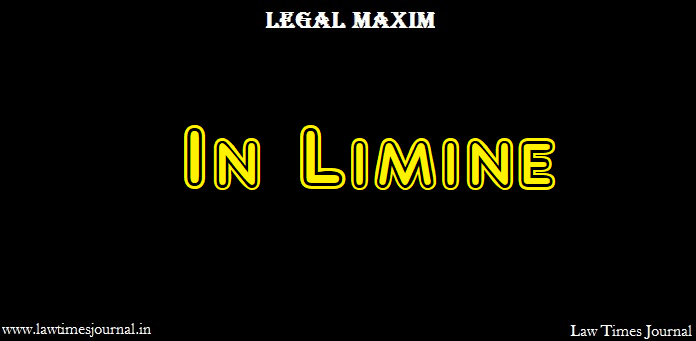
Literal Meaning
At the outset, on the threshold.
Explanation
A motion in limine is a motion that is tabled by one of the parties at the very beginning of the legal procedures and seeks to pull the rug out from under the feet of the other party.A motion presented at the outset of a case to determine the admissibility of certain evidence. Procedure relating to, or being a motion, petition, or order regarding the admissibility of evidence whose exclusion is sought especially on the ground that it is prejudicial.
Origin
It is a Latin term which means ‘on the threshold’ was originally used as a request made to the judge before a trial begins, such as a request to exclude evidence. It is a term which is specifically used before a particular procedure or proceeding takes place.
Illustration
In limine motion might be to stay the adjudication of a claim until the resolution of another, on which the claim for which a stay is being sought so extensively depends.
- In limine motion to assert an application that the tribunal does not have jurisdiction.
Case Reference
In the case of Blanks vs. Sayfarth,[1] the Court of Appeals of California, the words were adopted
‘”In limine motions are designed to facilitate the management of a case, generally by deciding difficult evidentiary issues in advance of trial. The usual purpose of motions in limine is to preclude the presentation of evidence deemed inadmissible and prejudicial by the moving party. A typical order in limine excludes the challenged evidence and directs counsel, parties, and witnesses not to refer to the excluded matters during trial. The advantage of such motions is to avoid the obviously futile attempt to unring the bell in the event a motion to strike is granted in the proceedings before the jury…
“Although trial courts may exercise their inherent powers to permit nontraditional uses of motions in limine, when used in such fashion they become substitutes for other motions, such as summary judgment motions, thereby circumventing procedural protections provided by the statutory motions or by trial on the merits; they risk blindsiding the non-moving party; and, in some cases, they could infringe a litigant’s right to a … trial.”
Edited by Vigneshwar Ramasubramania
Approved & Published – Sakshi Raje
Reference:
[1]Blanks v. Sayfarth,2d Civil No. B183426 consolidated with B186025





